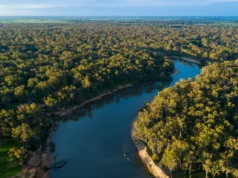
At risk of stating the bleeding obvious, I’ve always believed the best thing a ski resort can have going for it is a mountain. I appreciate that by definition ski resorts tend to be set amid lofty environs, but there’s a difference between being in the mountains and having an outstanding singular peak as a centrepiece.
Japan’s Niseko is plonked in front of the perfect cone of Mt Yotei. Lech-Zurs in Austria quivers under the mighty Omeshorn. Without the Matterhorn, Zermatt hardly matters. Even our own Mt Buller benefits from having what might be better called a prominent pimple poking up above the village.And then there’s Lone Mountain, which could be the biggest thing in Montana. We drive an hour south from Bozeman, and suddenly there it is, a sky-piercing pyramid so captivating it silences all car chatter. Geologically, it’s a laccolith; a volcano that forgot to erupt, so just kept swelling. It seems to grow even bigger as we approach Big Sky Resort, where for the next week my family and I will see it from every possible angle. It’s impossible not to. It rises behind every ridge, photobombs every picture. It glows warm as a candle at sunrise, and becomes sharp-edged and blazing white at night, like an iceberg in the sky. But unlike the resorts previously mentioned, Lone Mountain is more than a stunning backdrop; it’s the central terrain feature. Expert-level runs, ranging in difficulty from mere black diamond to triple black diamond, otherwise known as “high-consequence terrain”, spill from its 3404m summit. Skiers wanting to drop into the Big Couloir (earning ultimate Big Sky bragging rights) must sign in with ski patrol, carry an avalanche beacon and nominate a loved one to manage their posthumous affairs. I spend days staring at the peak, thinking: “Could I?”
Read the full story here


